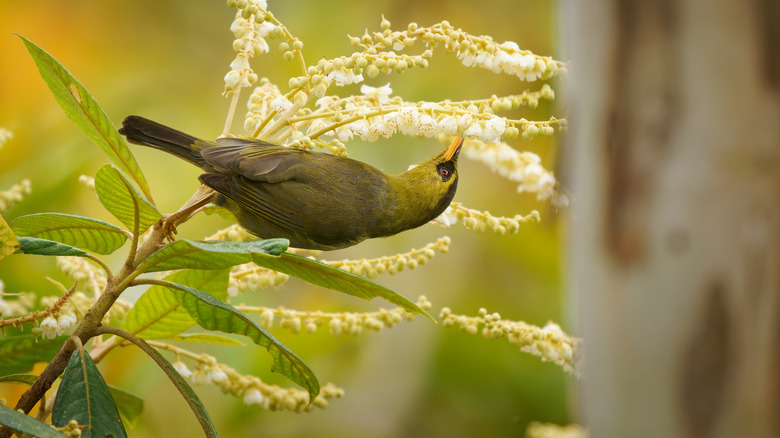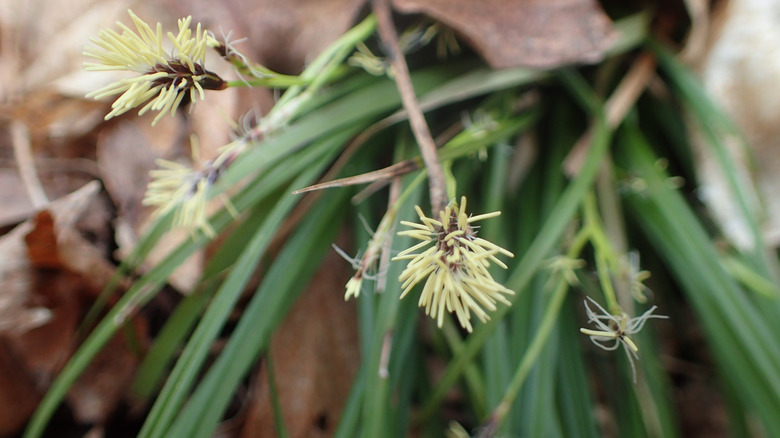The Ground Cover You Can Plant In Your Yard To Help Pollinators Nest
Pollinators like birds, butterflies, and bees are responsible for the development of about 35% of crops all over the world. And an impressive three-fourths of all flowering plants depend on these pollinators to reproduce. While the USDA notes that many pollinators are disappearing, there's a way you can help that will not only increase the populations of these essential creatures but also benefit your yard and garden. If you can attract pollinators and get them to nest in your garden, all the better. Planting annual and perennial plants in your garden can attract birds and other beneficial pollinators to your garden. You might not realize it, but ground covers that flower like Pennsylvania sedge (Carex pensylvanica) can encourage them to visit and nest as well.
This herbaceous perennial grows about a foot high, produces small cream, green, red, and white flowers, and attracts not only birds, bugs, and butterflies but also small mammals. Several birds, like ducks and grouses, will use this sedge for nesting material, while other birds, like migrating waterfowl, can use the plant for cover. Since Pensylvania sedge thrives in the shade, it is an excellent ground cover to use under trees or shrubs, giving birds even more reason to stay and nest. You can also leave additional nesting material out for your bird friends to encourage them to stay. Twigs, leaves, and dried grass are all good options they will appreciate and use.
Caring for Pennsylvania sedge and pollinator benefits
This lovely green draping ground cover prefers sandy soil that drains well and thrives in zones 3 through 8. The flowers bloom in the spring, and the plant is deer-resistant, but grasshoppers and leafhoppers like to feed on the foliage, attracting songbirds to feast. If you create an environment where those birds stay to nest, you'll have young chicks that will also feed on destructive bugs as they grow. The Audubon Society reports that one nest full of chickadees can consume up to 9,000 caterpillars per season. Other bugs nesting birds can eat include aphids, termites, crickets, and beetles.
Those looking for ground covers to help with erosion control are in luck with Pennsylvania sedge, as it's easy to grow, is relatively low maintenance, and excels in controlling soil erosion. That said, it doesn't tolerate a lot of foot traffic, so plant this sedge in an out-of-the-way area or a place that receives only occasional light traffic. Another benefit you'll receive from planting this ground cover and attracting nesting pollinators to your yard is that you probably won't have to use as many pesticides to control insects. Plus, you'll be supporting your local ecosystem. And once you've successfully encouraged the birds to nest, many of them will return, so you — and they — can reap these benefits year after year.

